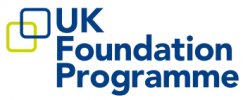How many SLEs need to be completed?
There is no specific number of SLEs required in a particular level of training or in a particular placement. Numbers will depend on the availability of opportunities to undertake them and the benefits to the FD of formal feedback. Higher numbers should provide more robust evidence of progress against the curriculum. Different teachers/trainers should be used for each SLE wherever possible, to gain a variety of different viewpoints.
Each FPC needs to have a sufficient range of evidence mapped to show competence in the behaviours described, for which a significant number of SLEs (among other types of evidence) is usually required.
How frequently should SLEs be done?
SLEs do not necessarily need to be planned or scheduled in advance (although this can be helpful too) and should occur whenever a teaching opportunity presents itself. FDs are expected to demonstrate improvement and progression during each placement and this will be helped by undertaking frequent SLEs. Therefore, FDs should ensure that SLEs are evenly spread throughout each placement.
How is an SLE completed?
The decision to undertake an SLE is typically led by the FD, who should request that the professional providing feedback complete the relevant form following the encounter. The relevant form can be generated from the FD’s e-portfolio. The choice of appropriate professional will depend on the situation and the SLE chosen but should be someone with appropriate knowledge, skills and experience in the area.
Who can complete SLEs with FDs?
FDs will obtain most benefit if they receive feedback from a variety of different people.
Feedback should usually be from:
Supervising consultants
GP principals
Doctors who are more senior than an F2 doctor
In specialty areas, it is likely the supervising doctor will have some relevant experience and at least some of the FD’s CBDs should be undertaken with doctors who have obtained part or full membership/fellowship in the specialty
F2s should be able to supervise the GMC’s ‘practical skills and procedures’ using DOPS
Experienced nurses (band 5 or above)
For example, specialist nurses or advanced care practitioners
Allied health professional colleagues
In the case of CBD, ideally with specialist expertise
What sort of feedback should be expected?
To maximise the educational impact of the SLE it is important that feedback is provided immediately and that this is recorded in the e-portfolio as soon as possible after the event. Feedback should include comments on achievements and areas of excellence. Areas which were found to be difficult and/or require development should also be recorded. An action plan should be agreed. This should be done sensitively and in a suitable environment. Information on giving feedback can be found in the Curriculum.
Recommendations for further development should be given. This might include suggestions for further SLEs on more complex problems.
In an ideal world, the entries in the e-portfolio would be made contemporaneously but it is possible that they may be made some time after the encounter has taken place. In such a situation, it is not necessary that all sections of the form are completed. However, as a minimum there must be feedback from the trainer, reflection by the FD and a plan.
Remember that all doctors have scope for development and are expected to actively engage in life-long learning and refine their skills throughout their careers. It is important that FDs understand that they can improve their performance.
What kind of topics should SLE cover?
As the aim of SLEs is for the FD to learn and develop, ideal topics should be those which the doctor finds challenging, difficult or they wish to improve upon. There is little benefit from undertaking a SLE on a very straightforward problem which the doctor already knows how to manage. It is the FD’s responsibility to arrange an appropriate range as well as number of SLEs.
Non-urgent advice: Whose responsibility is it to complete SLEs?
The foundation doctor should demonstrate engagement with this process. With support from the clinical and educational supervisor(s), it is the foundation doctor’s responsibility to arrange the frequency, adequate numbers and an appropriate range of SLEs, and to ensure that completed SLEs are recorded within the e-portfolio.
